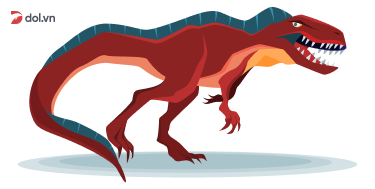Walking With Dinosaurs IELTS Reading Answers with Explanation
Luyện tập đề IELTS Reading Practice với passage Walking With Dinosaurs được lấy từ cuốn sách IELTS IELTS Trainer - Test 1 - Passage 1 với trải nghiệm thi IELTS trên máy và giải thích đáp án chi tiết bằng Linearthinking, kèm list từ vựng IELTS cần học trong bài đọc.
📖 Bài đọc (reading passage)
❓ Câu hỏi (questions)

🔥 Answer key (đáp án và giải thích)
Giải thích chi tiết
Câu này nếu chỉ skim/scan những từ khoá như “outdoor”, “rarely", thí sinh sẽ rất dễ chọn NOT GIVEN vì dường như không tìm được những keywords trên trong bài đọc. 
Áp dụng DOL’s Linearthinking
So sánh nội dung câu hỏi và bài đọc:
Bài đọc:
1. The media image of palaeontologists who study prehistoric life is often of field workers ....
=> People who study prehistoric life usually do it outdoor (field work là công việc thực chiến, làm ở ngoài trời)
2. But Peter Falkingham has done little of that
3. Instead , he devotes himself to his computer .
=> But Peter rất ít khi làm outdoor, mà làm ở computer
So sánh nội dung câu hỏi và bài đọc:
Bài đọc:
1. The media image of palaeontologists who study prehistoric life is often of field workers ....
=> People who study prehistoric life usually do it outdoor (field work là công việc thực chiến, làm ở ngoài trời)
2. But Peter Falkingham has done little of that
3. Instead , he devotes himself to his computer .
=> But Peter rất ít khi làm outdoor, mà làm ở computer
=> Tóm lại: When studying prehistoric life, Peter has done little field work. He spends time on his computer instead.
Câu hỏi: In his study of prehistoric life, Peter Falkinghom rarely spends time on outdoor research those days.
So sánh giữa câu hỏi và bài đọc: done little field work = rarely spend time on outdoor research
-> Thông tin câu hỏi trùng khớp với bài đọc
=> Đáp án: A. Yes 


